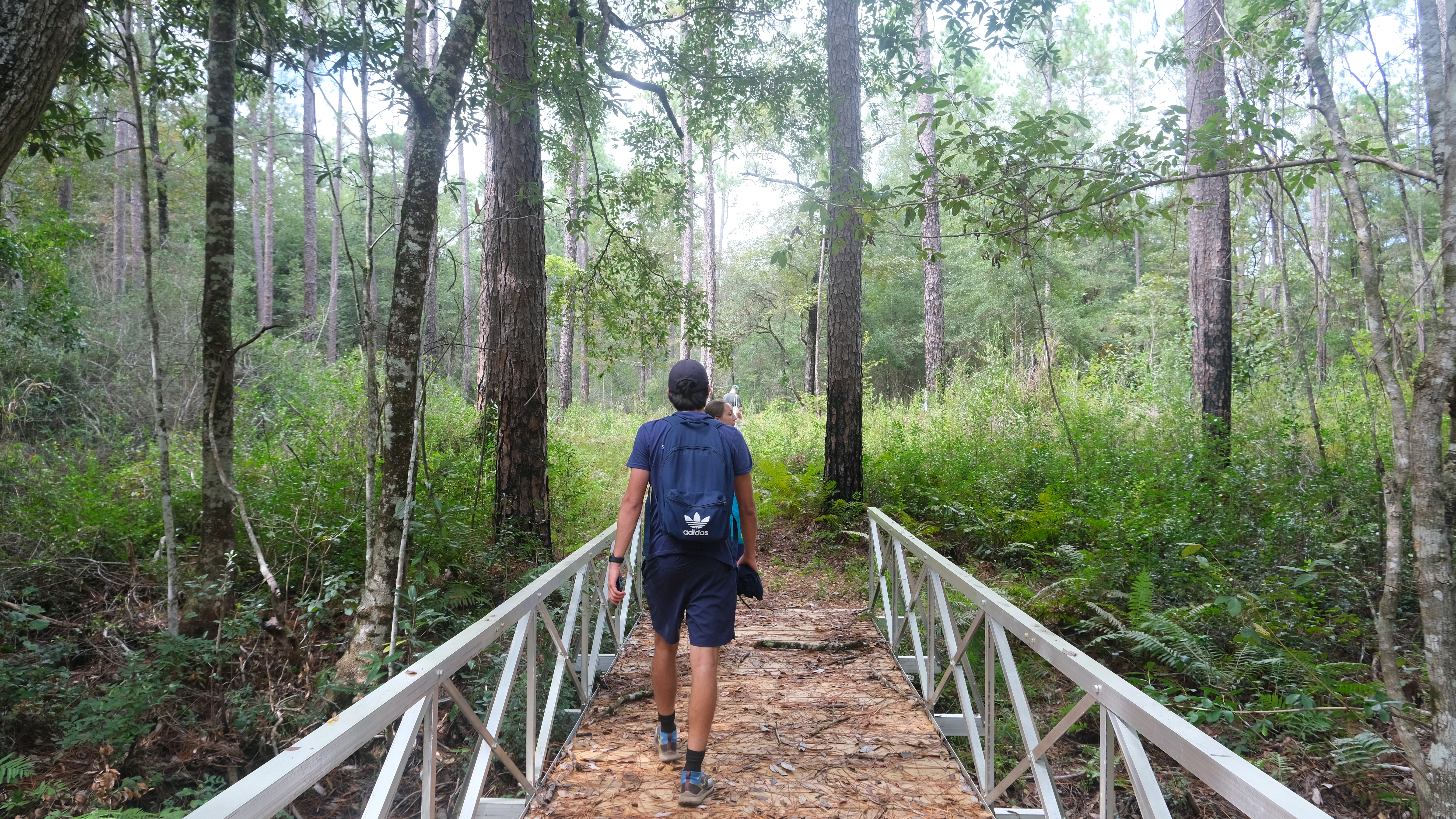content body
With nearly 70% of Alabama’s landscape covered with forest, the growth of the mass timber construction industry is sparking important new questions for the state and region.
While many of those questions focus on economics, landscape architecture students in Auburn University’s College of Architecture, Design and Construction (CADC) recently asked a different question: Is it possible to produce mass timber wood products without sacrificing the ecological integrity, biodiversity and cultural value of the state’s forests?
Auburn graduate student Esteban Cuellar Gutierrez, who has studied both architecture and landscape architecture, thinks it is, but it’s going to take some careful planning.
“I find the possibilities that mass timber brings to the field fascinating,” Cueller Gutierrez said. “However, it’s crucial to understand its origins and the ecological implications it may have on the balance of our state’s environment. We cannot simply assume that planting trees is inherently beneficial for the environment and our future — the way we plant and manage them, the scale of planting and the biodiversity they promote are equally important.”
A native of Bogotá, Columbia, and a current Master of Landscape Architecture student, he recently participated in the Alabama Lab, the design research lab of Auburn’s Landscape Architecture program. The Alabama Lab uses advanced studio courses to investigate a range of complex landscape issues through the lens of design.
With a varying rotation of instructors, the course themes shift each semester, but they always have a focus on creating impactful, long-term initiatives. This past semester, the class kicked off a new initiative, engaging with the complex landscape issues associated with mass timber construction and its demand on the state’s forests.
“The Alabama Lab focuses on issues facing the state, especially rural, coastal and post-industrial landscapes,” said Emily Knox, associate professor and graduate program chair in CADC, who taught the class this semester. “Each year, we evaluate potential Alabama Lab studio options, and we have a small committee of faculty that decides which issues to prioritize. The number of faculty who have taught in the lab has historically been somewhat limited, but we are excited for that to change in the next few years as junior faculty bring their research into the studio.”
At the beginning of the semester, Knox led her students on a three-day tour of southern Alabama and North Florida, where students spent time doing fieldwork in a variety of Longleaf pine forests. They visited Blue Springs State Park in Clio, Conecuh National Forest on the Alabama-Florida state line, Blackwater River State Forest in North Florida and Escambia Experimental Forest in Southwest Alabama. They also spoke with foresters and growers at a seedling nursery in Atmore, Alabama, and producers at a timber mill in Brewton, Alabama.
The students learned about forest types, forestry methods and different approaches to managing forests for fiber production, ecological restoration and recreation. They also studied the politics and policies that influence the production of forests around the state. Being students of design, they documented their work through drawing, modeling and mapping.
Cueller Gutierrez was glad to have the opportunity to conduct fieldwork outside the studio, and he said visiting the Escambia Experimental Forest felt like stepping into an old ruin from the early 20th century.
“I found it fascinating that what initially appears to be a simple forest with just a handful of species is actually one of the most biodiverse landscapes in North America,” he said. “For example, the Longleaf pine savanna may seem only about the pine, but its groundcover and shrub layer support a complex web of relationships among many species. The effort of going outside is essential for the design process that happens in the studio; we create better landscapes only when we can experience them personally.”
His classmate Caitlin Holt, who grew up in Alabama, agreed.
“Walking through a well-managed Longleaf pine savanna in the Blackwater River State Forest was special,” she said. “These forests once dominated the landscape, and being there offered a glimpse into what the land used to be like. The biodiversity was unlike anything else I have seen before, and I felt inspired to be an advocate for this valuable forest.”
Having developed an appreciation for Alabama’s forests, Cueller Gutierrez said he and his classmates now have a better understanding of how to manage both the growth of mass timber construction and the health of the state’s forests.
“As landscape architects, our role is to reevaluate and rethink whether we can create a balance between a potentially powerful industry for Alabama and the ecosystem services it risks,” he said. “I believe there is a way to achieve both.”









